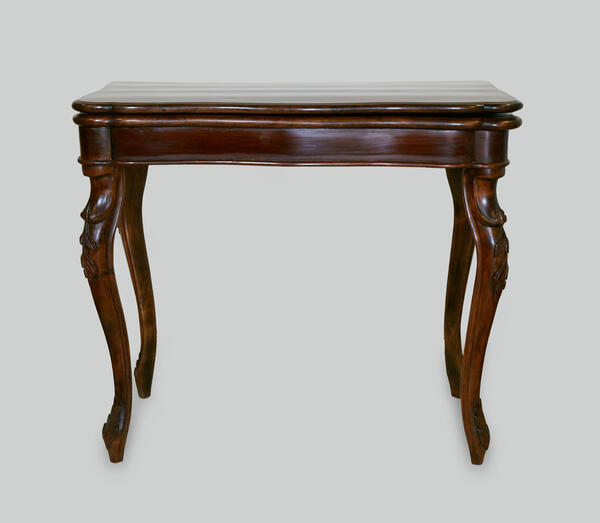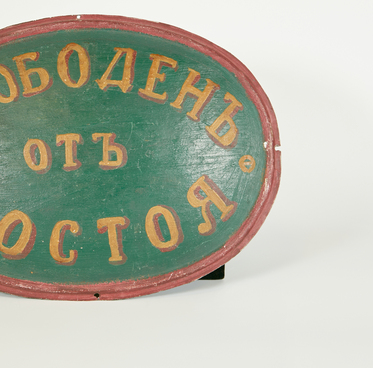The collection of the Museum of Moscow includes a card table — a piece of furniture designed for card games. In Russian, it is called a “lomberny” table — from the Ombre card game popular in Spain in the 16th century, which later spread to other European countries.
Strictly speaking, gaming tables were known before, but they were not used specifically for card games, since the game of cards, also known in Europe since the 14th century, repeatedly fell under various prohibitions. Thus, the gradual spread of card games in society and the evolution of the gaming table as a table for playing cards initially went parallel to each other, without intersecting. At first, ordinary tables were adapted for the game, but later, when card games became a popular form of entertainment in noble society, they received their own design features. There were folding tables of any shape — rectangular, square and even round. Crosspieces between the legs of the table began to disappear for the convenience of players, not only men, but also women who wore dresses with voluminous skirts. The tabletop was often upholstered with cloth. Such tables were often bespoke, made of precious woods, and decorated with carvings, inlays and images in the technique of intarsia — a woodworking technique to decorate the surface of the table, in which materials appear to be inlaid in one another. When folded, the tables could serve as a console or a stand for flowers or a small sculpture. Inside the table as a rule, there was a box for game accessories. Before the game, the table was unfolded, and the inside, wrapped in cloth, became the outside.
The table presented in the collection of the Museum of Moscow, decorated only with modest carvings in the form of leaves in the upper and lower parts of the curved legs, has a traditional folding design and an internal drawer that opens when the folded tabletop is moved sideways. The table top is upholstered in green cloth. In Russia, such tables became popular in the 18th century, when commercial card gaming was included in the list of permitted home entertainment.




